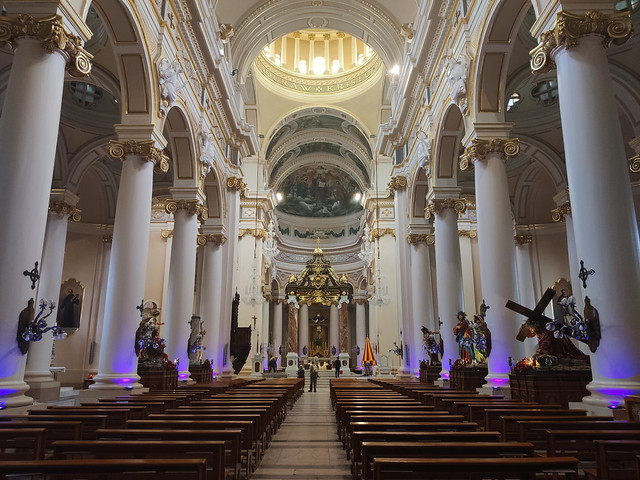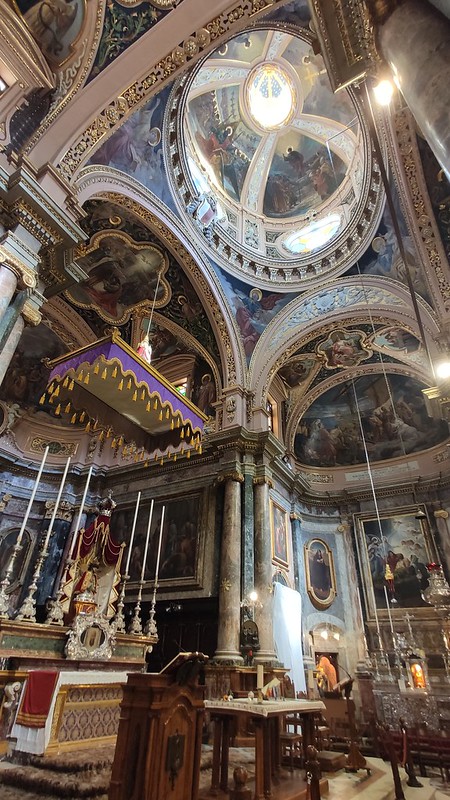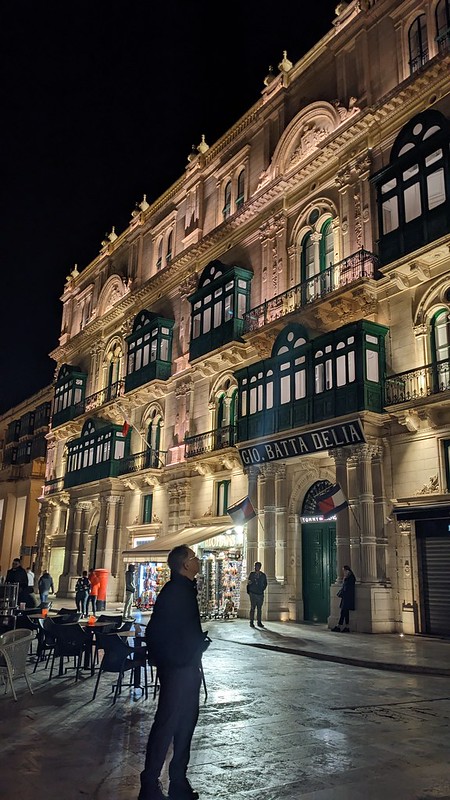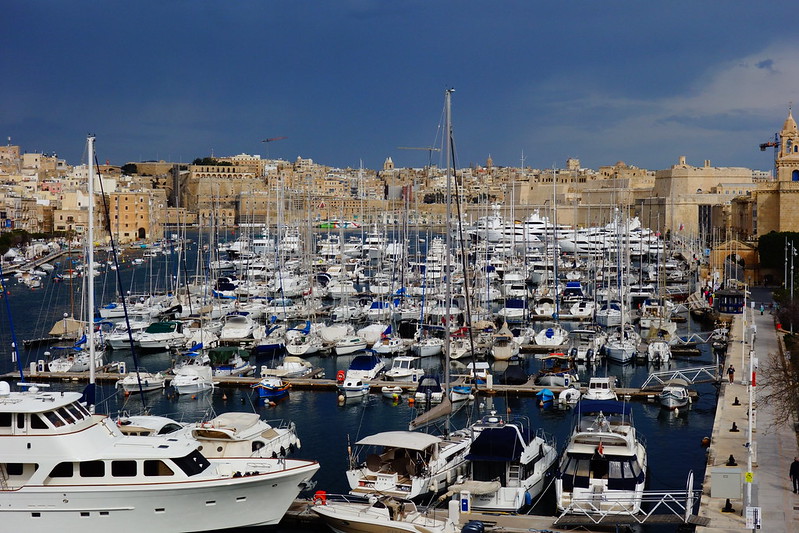From the Temple people, they have incomparable stone age artifacts.
From the Knights of Malta, they have many interesting fortifications, all over the island.
On the other hand, the Maltese are not so keen on reflecting on their Islamic heritage.
The conspicuous looking enclosed balcony (galleriji) much loved all over the island are just like the miradores in Spain. I used to call them Turkish windows as I associated them with Ottomans. It is obvious to me now they are Mashrabiyas, spread by Islamic conquerors.
What I found most interesting is that the language Maltese is a Semitic language, as in Arabic and Hebrew, but written in Latin script, from the Arab rulers 870-1090. None of the subsequent conquests changed that, except under the Knights of Malta Arabic was changed to Latin script, until the British came in 1800. Today almost everyone and everything is bilingual.
The churches in Malta were sumptuous to say the least. Below is the Sanctuary Basilica of the Assumption of Our Lady in Mosta, Malta. It is also known as the Rotunda of Mosta and is modeled after the Pantheon in Rome.

The Parish Church in Paola, Malta.



Basilica of Our Lady of Mount Carmel in Valletta.

St. John's Co-Cathedral in Valletta.

Church of St. Paul’s Shipwreck, Valletta.



A church in Birgu (Vittoriosa).

The streets in Rabat as they were preparing for the Feast of St Joseph. The decorative street lamps that were up in advance were pretty spiffy/upscale.



Mdina, adjacent to Rabat, is a fortified city.


Here we are at the base of the Birgu (Vittoriosa) fortifications, looking across the water at Valletta's forts.

And from Valletta's upper fortifications, looking to Birgu (Vittoriosa) fortifications.


On top of the Valletta walls looking north.

Finally, some shots of enclosed balconies (galleriji). At night in Valletta.

Near our apartment in Floriana.

In Rabat.

On the Valletta waterfront.

The yacht basin in Birgu (Vittoriosa).


The main drag in Valletta.



2 comments:
Nice to see inside pictures of the church. I saw the exterior when I was there in 2016 but didn’t have time to go inside.
The bad thing about Malta is that they make you pay for everything. We worked hard seeking out free times/entries into churches.
Post a Comment